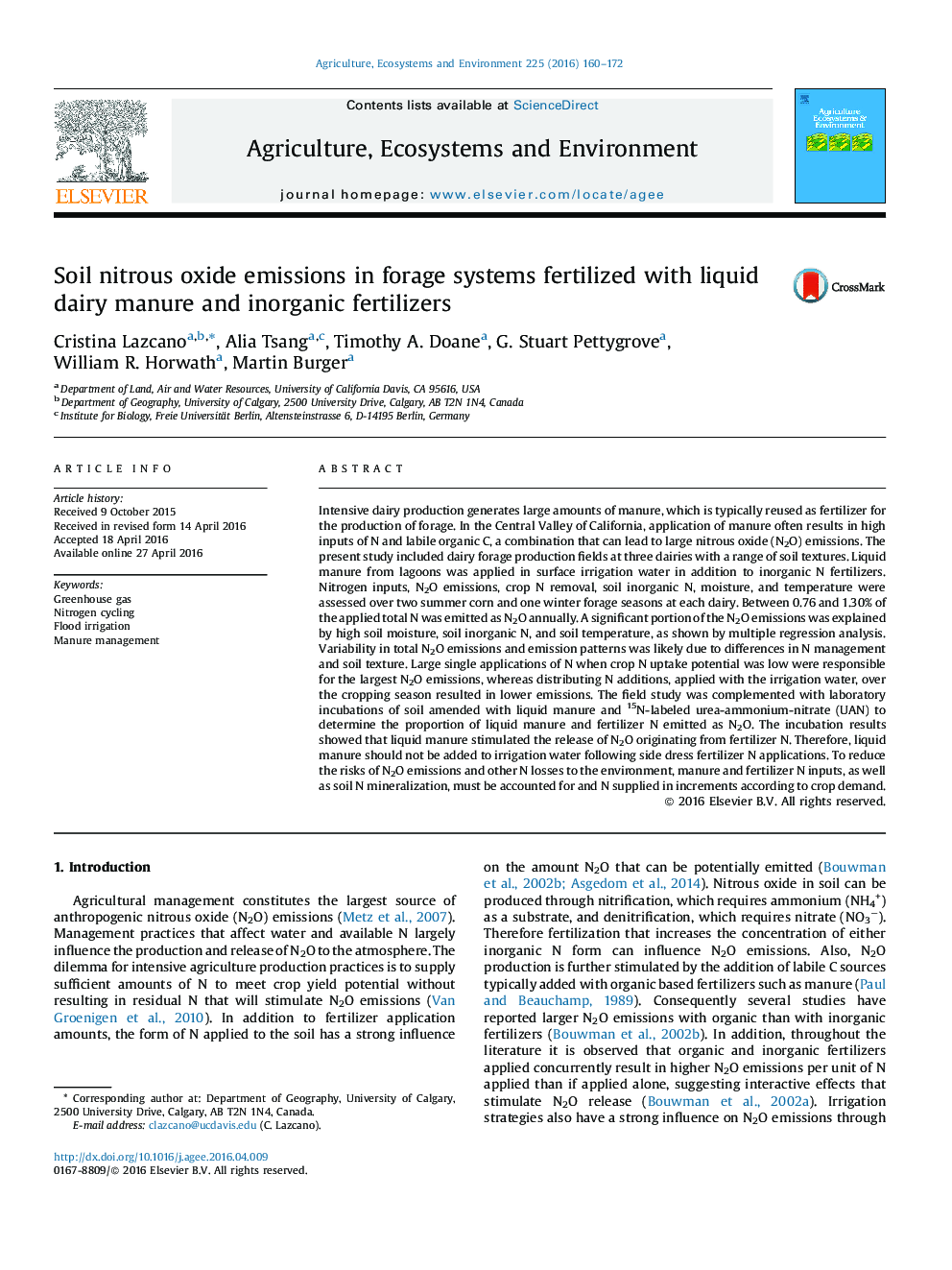| کد مقاله | کد نشریه | سال انتشار | مقاله انگلیسی | نسخه تمام متن |
|---|---|---|---|---|
| 2413566 | 1552027 | 2016 | 13 صفحه PDF | دانلود رایگان |
• Dairy forage production receives large N inputs as manure and inorganic fertilizers.
• Liquid manure increased the N2O release from synthetic N fertilizers.
• Soil moisture, inorganic N and temperature explained most of the N2O emissions.
• Incremental N applications distributed over the entire growing season released less N2O than single large N additions.
Intensive dairy production generates large amounts of manure, which is typically reused as fertilizer for the production of forage. In the Central Valley of California, application of manure often results in high inputs of N and labile organic C, a combination that can lead to large nitrous oxide (N2O) emissions. The present study included dairy forage production fields at three dairies with a range of soil textures. Liquid manure from lagoons was applied in surface irrigation water in addition to inorganic N fertilizers. Nitrogen inputs, N2O emissions, crop N removal, soil inorganic N, moisture, and temperature were assessed over two summer corn and one winter forage seasons at each dairy. Between 0.76 and 1.30% of the applied total N was emitted as N2O annually. A significant portion of the N2O emissions was explained by high soil moisture, soil inorganic N, and soil temperature, as shown by multiple regression analysis. Variability in total N2O emissions and emission patterns was likely due to differences in N management and soil texture. Large single applications of N when crop N uptake potential was low were responsible for the largest N2O emissions, whereas distributing N additions, applied with the irrigation water, over the cropping season resulted in lower emissions. The field study was complemented with laboratory incubations of soil amended with liquid manure and 15N-labeled urea-ammonium-nitrate (UAN) to determine the proportion of liquid manure and fertilizer N emitted as N2O. The incubation results showed that liquid manure stimulated the release of N2O originating from fertilizer N. Therefore, liquid manure should not be added to irrigation water following side dress fertilizer N applications. To reduce the risks of N2O emissions and other N losses to the environment, manure and fertilizer N inputs, as well as soil N mineralization, must be accounted for and N supplied in increments according to crop demand.
Journal: Agriculture, Ecosystems & Environment - Volume 225, 1 June 2016, Pages 160–172
